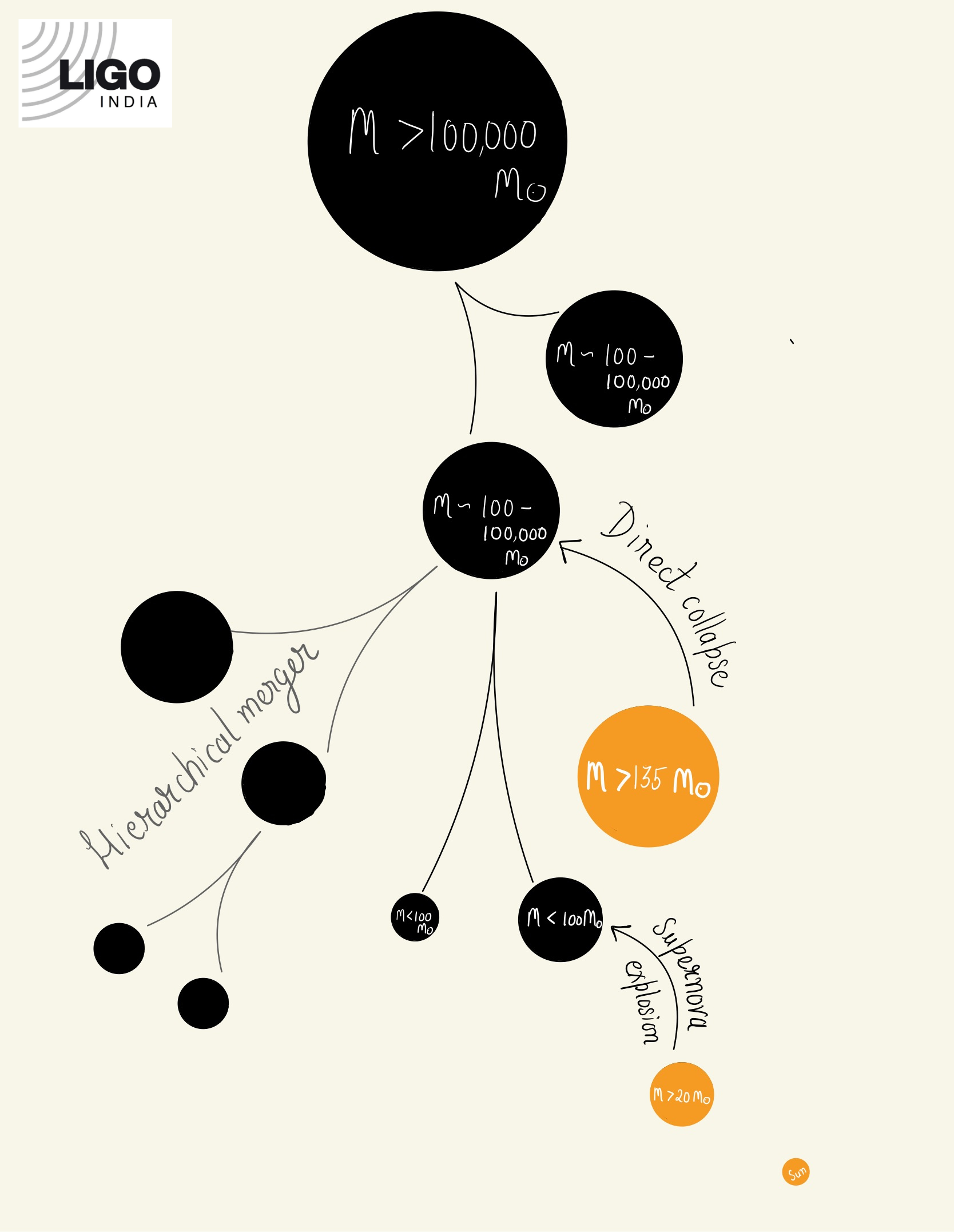What are Intermediate Mass Black Holes?
An Intermediate Mass Black Hole (IMBH) is an elusive bridge between stellar-mass black holes and supermassive black holes (Figure left. Credit: LIGO-India/Kanchan Soni). A new combined search by Advanced LIGO/Virgo & KAGRA in their third observing run O3 led to a better understanding of these mysterious objects. The results were published on arxiv.org.
The search found GW190521 to be the most significant IMBH candidate. The shape of the signal GW190521 agrees with that of the merger of two heavyweight BHs with masses 66 and 85 times the sun, forming a remnant BH of mass ~142 times the Sun.
The discovery of this object was announced on Sept 2, 2020 in an earlier publication. This record breaking observation marked the beginning of confident IMBH detections, and opened the possibilities to test the General Theory of Relativity in extreme environments. Using numerically simulated GW190521-like signals, scientists in LIGO/Virgo/KAGRA gave a prediction of how often IMBH mergers can occur in a given volume of the Universe.
Read more about the search: www.arxiv.org/abs/2105.15120, https://dcc.ligo.org/P2100025/public
Read more about the discovery of GW190521: www.ligo.org/science/Publication-GW190521/
You can read more about BHs in this Gravity Matters blog post: www.ligo-india.in/blog13/
Cartoon representing some possible mechanisms for the formation of IMBH of mass in between 100 to 100,000 times the mass of the Sun.
(Credit: LIGO-India/Kanchan Soni)
The very existence of IMBH still remains a puzzle. Current theories indicate that most light black holes are stellar corpses, and these can merge with nearby black holes to grow in size. This mystery can be solved when GWs emitted by such mergers can be intercepted by GW detectors such as Advanced LIGO/Virgo & KAGRA.
Indian Contributions
The search for IMBHs by LIGO-Virgo-KAGRA Collaboration has important contributions from Indian Scientists from LISC! Prof. Archana Pai and her students Koustav Chandra, Nirban Bose from IIT Bombay, and Kanchan Soni from IUCAA were involved in the matched filter bank development as well as in carrying out this search along with their collaboration colleagues.
GW190521 and GWTC2 IMBH contributions
- Soumen and Anand: PyCBC Template Bank
- Koustav and Archana (with LVK members): Follow-up study of the PyCBC search results
Previous media releases:
- https://science.thewire.in/the-sciences/gw190521-ligo-virgo-gravitational-waves-heaviest-black-holes-mass-gap-mystery/
- https://gadgets.ndtv.com/science/news/gw190521-black-hole-merger-intermediate-mass-oldest-ever-discovery-ligo-virgo-2289729
- https://timesofindia.indiatimes.com/city/pune/most-distant-g-wave-yet-from-black-hole-detected/articleshow/77899600.cms
- https://indianexpress.com/article/technology/science/massive-black-hole-merger-detected-gravitational-wave-signal-from-17-2-billion-light-years-away-captured-6580236/


